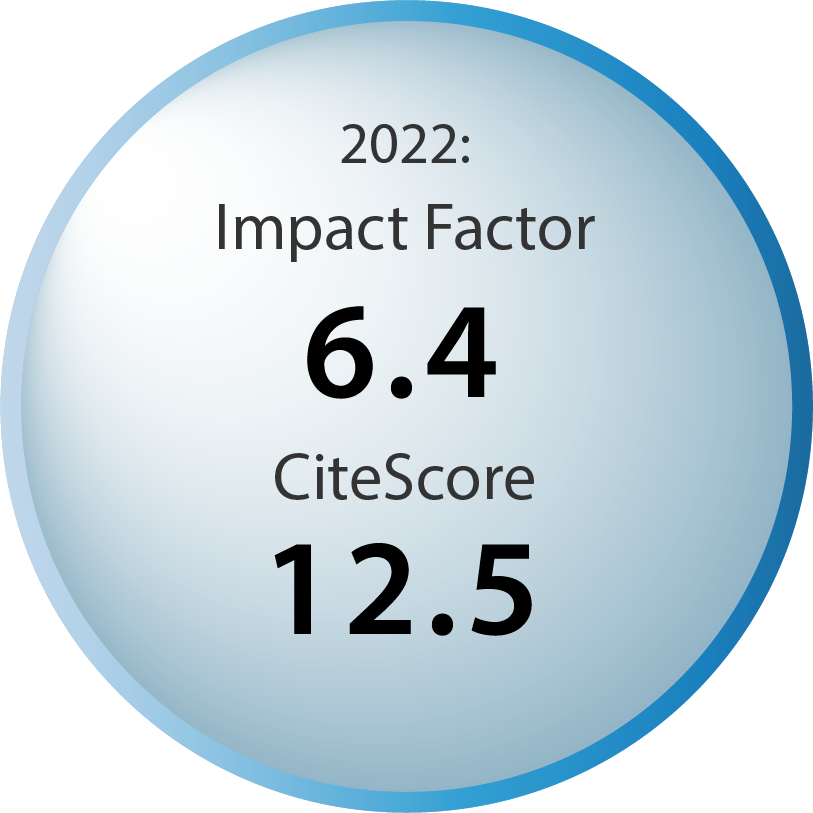Table of contents
Volume 2, Issue 7, pp. 150 - 183, July 2018
Cover: This month in
Cell Stress: Fatty liver disease. Image depicts a false-color histological trichrome stain showing cirrhosis of the liver. Image by by Ed Uthman, licensed under a
CC BY 2.0 license. Image modified by
Cell Stress. The cover is published under the
CC BY 4.0 license.
Enlarge issue cover
Alzheimer’s disease: amyloid-based pathogenesis and potential therapies
Yixiu Zhou, Yuhui Sun, Quan-Hong Ma and Yaobo Liu
Viewpoint |
page 150-161 | 10.15698/cst2018.07.143 | Full text | PDF |
Abstract
Alzheimer’s disease is one of the most severe neurodegenerative diseases among elderly people. Different pathogenic factors for Alzheimer’s disease have been posited and studied in recent decades, but no effective treatment has been found, necessitating further studies. In this Viewpoint article, we assess studies on the mechanisms underlying the accumulation of amyloid b (Aβ) peptide and the formation of Aβ oligomers because their accumulation in amyloid plaques in brain tissue has become a well-studied hallmark of Alzheimer’s disease. We focus on the production of Aβ and its impact on the function of synapses and neural circuits, and also discuss the clinical prospects for amyloid-targeted therapies.
Epigenetic mechanisms behind cellular sensitivity to DNA damage
Amanda K. Williamson, Zijing Zhu and Zhi-Min Yuan
Reviews |
page 176-180 | 10.15698/cst2018.07.145 | Full text | PDF |
Abstract
Epigenetic regulation of gene expression in cells is a complex and dynamic process that remains incompletely understood. The architecture of the chromatin itself and its level of condensation can greatly impact the expression of genes as well as the sensitivity of the DNA to damage. The compact nature of heterochromatin typically results in gene silencing and resistance to DNA-damaging agents, while less compact euchromatin results in gene expression and increased sensitivity to injury. There are diverse ways in which the chromatin structure, and therefore the sensitivity of cells to damage, can be regulated, including post-translational modifications to both the histones within the chromatin and the DNA itself. These modifications are tightly controlled and correspond to various factors such as metabolism and cell cycle. When these processes are dysregulated, as in cancer cells, the chromatin structure is also altered, ultimately changing the gene expression profile as well as the susceptibility of cells to DNA-damaging agents commonly used for cancer treatments. Recent studies have shown that manipulating the various players involved in regulating post-translational modifications to chromatin and exploiting differences in metabolism may prove to be effective methods for modifying cancer and normal cell sensitivity to damaging agents. In this review we discuss various ways of regulating chromatin structure and how these changes can influence cellular sensitivity to damage as well as the implications of these relationships for improving the efficacy and safety of cancer treatments.
Foie gras and liver regeneration: a fat dilemma
Maria Agnese Della Fazia and Giuseppe Servillo
Reviews |
page 162-175 | 10.15698/cst2018.07.144 | Full text | PDF |
Abstract
The liver has a unique ability of regenerating after injuries or partial loss of its mass. The mechanisms responsible for liver regeneration – mostly occurring when the hepatic tissue is damaged or functionally compromised by metabolic stress – have been studied in considerable detail over the last few decades, because this phenomenon has both basic-biology and clinical relevance. More specifically, recent interest has been focusing on the widespread occurrence of abnormal nutritional habits in the Western world that result in an increased prevalence of non-alcoholic fatty liver disease (NAFLD). NAFLD is closely associated with insulin resistance and dyslipidemia, and it represents a major clinical challenge. The disease may progress to steatohepatitis with persistent inflammation and progressive liver damage, both of which will compromise regeneration under conditions of partial hepatectomy in surgical oncology or in liver transplantation procedures. Here, we analyze the impact of ER stress and SIRT1 in lipid metabolism and in fatty liver pathology, and their consequences on liver regeneration. Moreover, we discuss the fine interplay between ER stress and SIRT1 functioning when contextualized to liver regeneration. An improved understanding of the cellular and molecular intricacies contributing to liver regeneration could be of great clinical relevance in areas as diverse as obesity, metabolic syndrome and type 2 diabetes, as well as oncology and transplantation.
Amelioration of obesity-induced diabetes by a novel autophagy enhancer
Hyejin Lim and Myung-Shik Lee
Microreviews |
page 181-183 | 10.15698/cst2018.07.146 | Full text | PDF |
Abstract
Autophagy insufficiency due to aging, high-fat injury or genetic predisposition could be a factor in the progression of metabolic syndrome and diabetes. On the other hand, autophagy enhancement may have beneficial metabolic impact on in vivo metabolism of obese subjects. To identify novel, autophagy enhancer small molecules, we screened a chemical library using a Renilla-LC3-based luciferase assay [Lim et al. Nat Commun 9:1438]. Of the >7000 tested substances, one chemical compound, termed MSL (4-(4-fluorophenyl)sulfonyl-5-methylthio-2-phenyloxazole), (i) enhanced autophagic activity through Tfeb activation, (ii) expedited lipid clearance, probably through lipophagy, and (iii) reduced inflammasome activation through amelioration of mitochondrial dysfunction both in vitro and in vivo, leading to improved metabolic profile of mice with genetic or diet-induced obesity.



